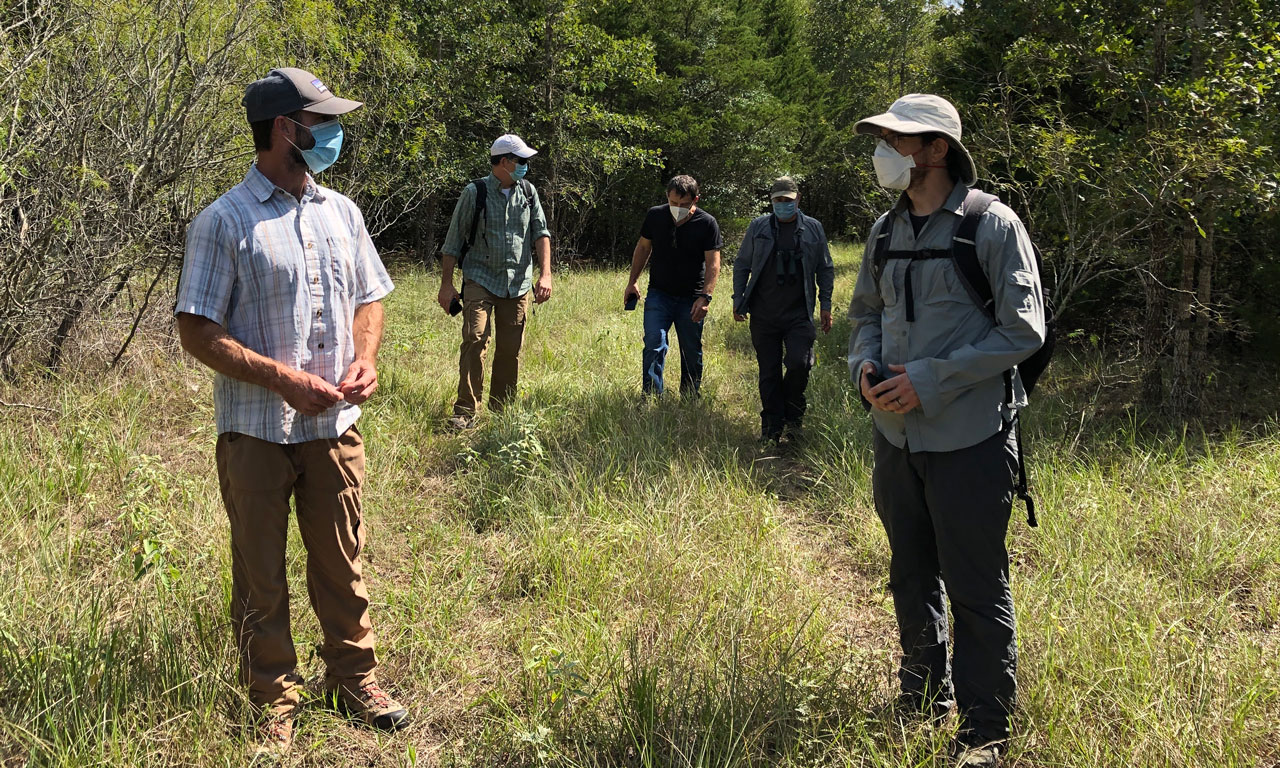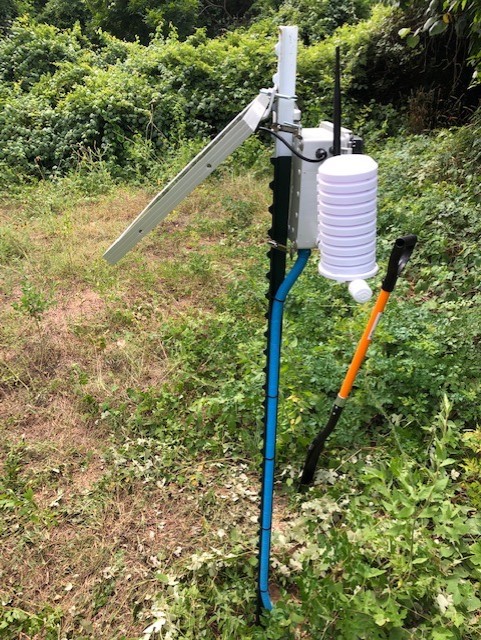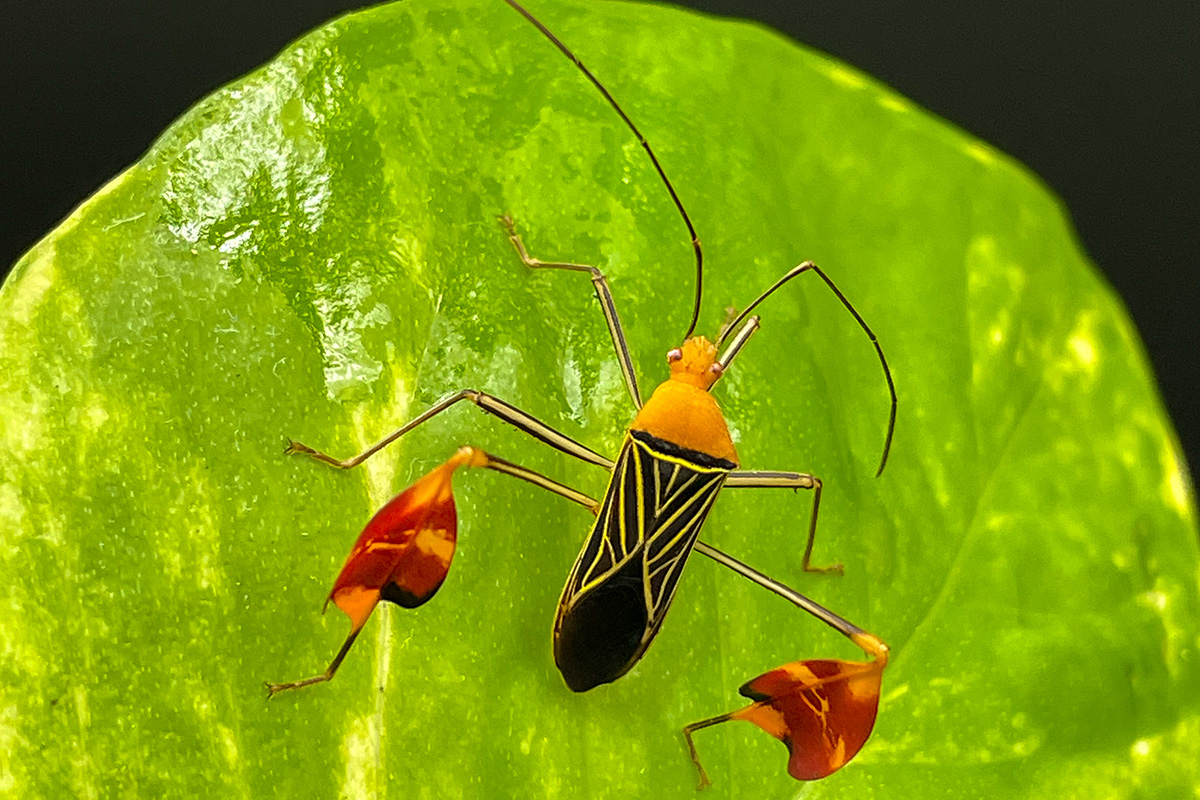Technological Leaps Help Biologists Study Quickly Changing Landscapes
Technology allows scientists to gather data where they never could before.

Biologists, naturalists and ecologists are typically known for conducting boots-on-the-ground field research, whether it is hiking through the jungles of Costa Rica to study rare frogs, paddling along Arctic coastlines to study sources of carbon or studying endangered birds in South Texas. But increasingly, technology is expanding the work these scientists can do beyond where their feet alone can take them.

An example of a data collection station in the field that biologists use to collect information about the environment. Image by The University of Texas at Austin.
In a recent paper published in the journal Science, Timothy Keitt, professor of integrative biology, and Eric Abelson, research scientist, discuss the ways in which quickly advancing technology tools are transforming biological field work now and creating the potential for even greater transformation.
"As automation drives down costs of these networks, there will not be a simple expansion of the quantity of data. Rather, the potential high resolution and broad extent of these data will lead to qualitatively new findings and will result in new discoveries about the natural world that will enable ecologists to better predict and manage changing ecosystems," says the paper, which resulted in part from support for the researchers from The University of Texas at Austin's Bridging Barriers Planet Texas 2050 research grand challenge and from research funding supported by the College of Natural Science's Stengl-Wyer Endowment.
Data collection in the field can be a challenging aspect of biological and ecological research, involving traversing long distances over rough terrain, sometimes in inhospitable weather and conditions, while hauling equipment and samples. Researchers cannot be present in the field year-round or 24 hours a day. Sometimes, the mere presence of a human can affect the behavior of animals the researchers are trying to study. Other times, it may be unsafe for researchers to monitor animals such as mountain lions or crocodiles.
"Field research is a difficult, time-consuming and expensive process," Keitt, who currently has field projects in Texas, Mexico and Mongolia, said. "Passive devices can sit there and record data continuously. They can provide a different kind of resolution on the things we're interested in studying."
UT researchers are using a variety of specialized equipment in their biology research. Camera traps use motion and other types of sensors to capture images or video of animals in the wild. Audio recording devices can help researchers determine what types of birds are in an area from their songs. Some are so sensitive, they may be able to identify individual birds. Other devices are able to monitor and record weather and atmospheric conditions, air and water quality. Miniaturization of components, advances in battery life and two-way wireless communication improvements have allowed scientists to observe and collect data in near-real time.
But with the massive increase in data comes the need for a way to store and analyze all of it.
Fortunately, advances in cloud computing allow the data to be stored and accessed from almost anywhere, and machine learning and artificial intelligence advances help scientists to analyze and sort through the raw data they receive from the field.
"One thing that we can do is train computer vision algorithms to identify among thousands of images which ones have animals in them, and maybe even identify which species of animal is present in that image," said Kelly Pierce, research assistant at the Texas Advanced Computing Center who is working with biologists at UT. "What used to take a graduate students weeks or months, of manually analyzing recordings listening for a bird song or looking through a thousand images to find the one that has a deer in it, can now be done in minutes."
Keitt and his team are currently working on a large set of audio recordings captured in partnership with the City of Austin of habitats of the golden cheeked warbler, an endangered bird species native to Central Texas.
"We're using some machine learning approaches to analyze these recordings," Keitt said. "It's an absolutely massive data set, but we're excited to see what we find."
Keitt and Abelson argue that while the advances in technology are allowing researchers to expand the scope and scale of their investigations, more can be done to take advantage of what tech can do for biologists. If scientists and citizens team up, they envision a potential sensor network that could provide nearly real-time data on the organismal level, but spread across a continent, to track ecological conditions and biodiversity as climate change continues to impact everything from insects to humans.
"Climate change is a global issue and, right now, we're working on the individual level," Keitt said. "Eventually we're going to need to coordinate on a global scale to make sure our data are more homogenous and more compatible so that we can study these changes."
At UT field research stations, such as Brackenridge Field Laboratory in the heart of Austin or the Stengl Lost Pines Biological Station near Smithville, researchers use sensor equipment that measures everything from the amount of light that plants are getting to the moisture levels in the soil. There are also camera traps and audio recording devices. With the help of this technology, researchers have been able to determine that species like ringtail cats and porcupines are active near downtown Austin, and images have been captured of novel interactions between coyotes and deer.
"We've been able to identify several larger vertebrates that we weren't really aware were present there," said Rob Plowes, research scientist at Brackenridge Field Lab.
As great as tech can be at capturing data, researchers agree that it cannot replace well trained biologists, ecologists and naturalists on the ground. It can only help them expand the scope and scale of their research.
"There is no substitute for getting your boots on the ground, especially during the initial phase of research," Plowes said. "One thing technology will never replace is serendipity. In the field, you're going to potentially come across things you're not expecting, something that comes into your scope of awareness, and suddenly you make a new discovery or find a new avenue to research."



